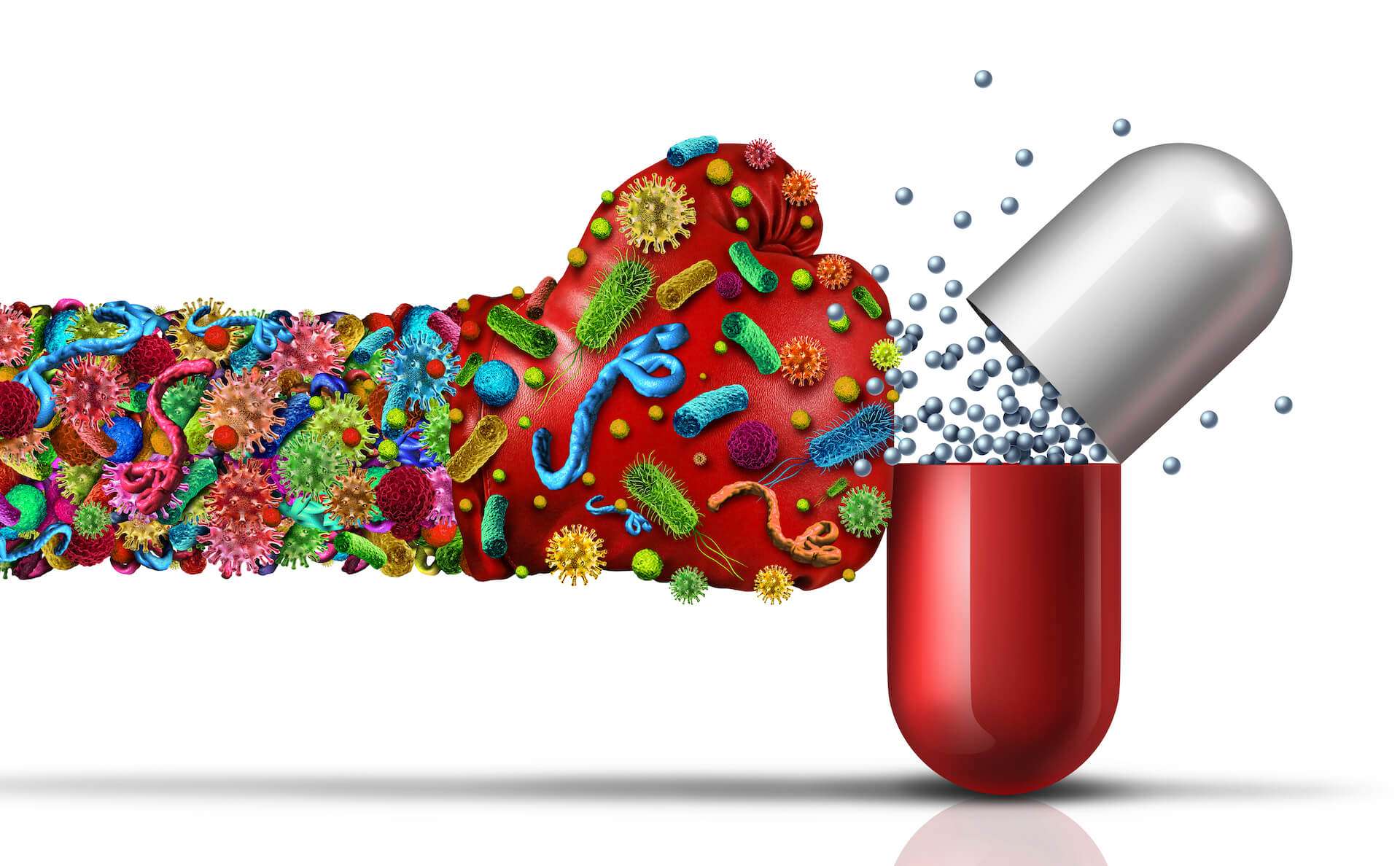Antibiotic-resistant germs on the rise

Antibiotic resistance defined:
Antibiotics are described as effective drugs that are used to treat infections caused by bacteria - but do not work against viruses. If antibiotics are not used in a targeted manner, the risk of antibiotic resistance can arise. The spread of this resistance means that certain antibiotics can no longer remain effective.
Substances with an antibiotic effect are produced with the help of microorganisms in the human or animal body in order to displace harmful bacteria. In order to provide their own protective mechanism, the organisms develop resistance (i.e. resilience). However, because bacteria can be highly adaptable, it is possible for them to alter their own genetic makeup and thereby become resistant to a particular antibiotic themselves. This means that the antibiotic can no longer kill the resistant bacteria or inhibit their growth. Consequently, these defense mechanisms in the allele (i.e., gene variation) of the bacterium are passed on to the next generation, causing the particular antibiotic to lose its effectiveness.
Possible Causes:
This natural defense mechanism of bacteria is most notable when antibiotics are taken frequently. The now resistant germs can have serious consequences, especially for small children and people with a weaker immune system. Incorrect use of antibiotics, such as by taking too low a dose or too short a course of therapy, can also contribute to the development of antibiotic resistance. Resistant bacteria are a significant problem especially in nosocomial infections, i.e. infections acquired in hospitals, as their control is usually only possible with highly potent antibiotics or antibiotic combinations.
Are there new developments?
Although new antibiotics are being developed, there is a greater chance that none of them will be effective against the most dangerous forms of antibiotic-resistant bacteria. Given that people can travel frequently and with ease in the current century, antibiotic resistance is a global problem.
New figures on the burden of disease and deaths from antibiotic-resistant pathogens:
The study, published in November 2018, in the journal The Lancet Infectious Diseases, published figures on the burden of disease from infections with antibiotic-resistant pathogens in the European Union. The calculations, based on data from the European Antibiotic Resistance Surveillance Network (EARS-Net for short ), show figures for disease outcomes and subsequent deaths. The results show that the burden of disease due to infections with antibiotic-resistant pathogens increased between 2007 and 2015. Take Klebsiella pneumoniae, for example - the number of deaths caused by the antibiotic-resistant rod-shaped bacterium increased sixfold in the EU during this period. The German federal authority for disease surveillance and prevention, the Robert Koch Institute, also participated in the study research. According to the report, about 670,000 people in the EU contract antibiotic resistance-related infections each year, and about 33,000 people die from them each year. In Germany, according to the report, up to 54,500 people contract such infections each year (with approximately 2,400 deaths). The majority of these infections in Europe are associated with medical treatments.
Magnitude of the problem:
Due to the rise in antibiotic resistance worldwide, new resistance processes are emerging that threaten the human ability to fight common infectious diseases. These include: Pneumonia, Tuberculosis, Blood Poisoning and Gonorrhea. Wherever antibiotics can be purchased without a prescription for human or animal use, the spread of resistance can worsen. Also, in countries without standardized treatment guidelines for antibiotics, they may be more frequently prescribed in high doses by medical health workers and taken by patients.
If infections can no longer be treated with simpler antibiotics, more costly drugs would have to be used, which could result in longer illness and treatment times in hospitals. This would increase health care costs and the economic burden on families and the population.
Also, the methods of modern medical procedures such as organ transplantation, chemotherapy, and surgeries such as cesarean sections would be at higher risk without effective antibiotics to prevent and treat infections.
Conclusion:
Although the development of newer antibiotics has picked up in recent years, they often lack effectiveness against the most dangerous resistant germs. The problem of antibiotic resistance even threatens the achievements of modern medicine, which is why an international and comprehensive response to this ever-growing problem is needed, especially in times of globalization.
Sources
- Alessandro Cassini, Liselotte Diaz Högberg, Diamantis Plachouras, et al. Attributable deaths and disability-adjusted life-years caused by infections with antibiotic-resistant bacteria in the EU and the European Economic Area in 2015: a population-level modelling analysis. The Lancet Infectious Diseases. Volume 19, Issue 1. 2019. Pages 56-66. https://doi.org/10.1016/S1473-3099(18)30605-4
- Zahlen zu Krankheitslast und Todesfällen durch antibiotikaresistente Erreger in Europa (Robert-Koch-Institut)
- Antibiotikaresistenz (Gesundheit.gv)
- Antibiotic resistance (World Health Organization)

Danilo Glisic
Last updated on 29.10.2020
Your personal medication assistant
Browse our extensive database of medications from A-Z, including effects, side effects, and dosage.
All active ingredients with their effects, applications, and side effects, as well as the medications they are contained in.
Symptoms, causes, and treatments for common diseases and injuries.
The presented content does not replace the original package insert of the medication, especially regarding the dosage and effects of individual products. We cannot assume liability for the accuracy of the data, as the data has been partially converted automatically. Always consult a doctor for diagnoses and other health-related questions.
© medikamio